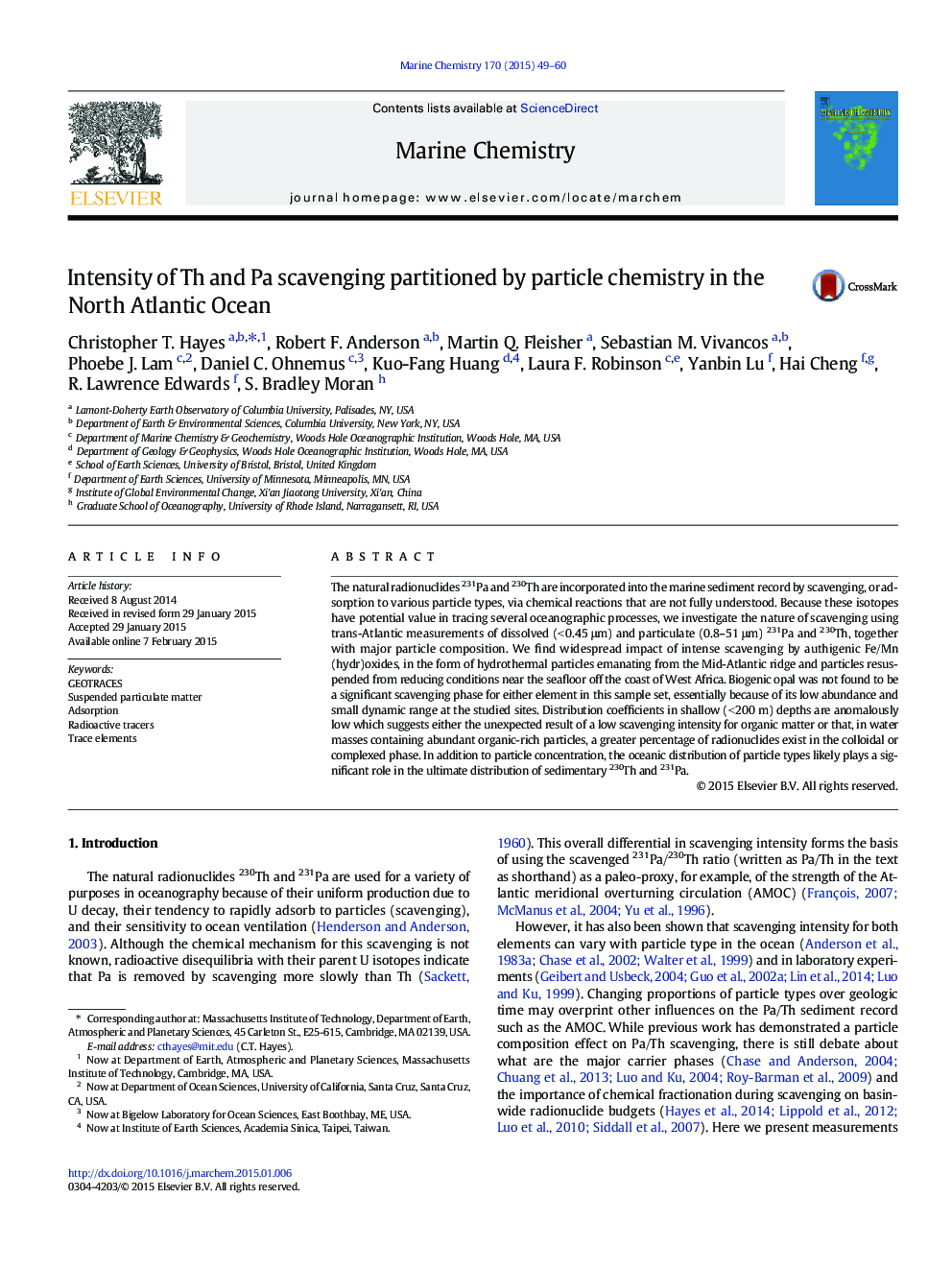| Article ID | Journal | Published Year | Pages | File Type |
|---|---|---|---|---|
| 1261272 | Marine Chemistry | 2015 | 12 Pages |
•In-situ measurements of scavenging distribution coefficient (Kd) for over 200 samples•Widespread impact on thorium and protactinium removal by Fe/Mn oxides•Biogenic opal not a major carrier phase for Th or Pa in this sample set•Organic colloids or complexes are implicated in shallow water scavenging.
The natural radionuclides 231Pa and 230Th are incorporated into the marine sediment record by scavenging, or adsorption to various particle types, via chemical reactions that are not fully understood. Because these isotopes have potential value in tracing several oceanographic processes, we investigate the nature of scavenging using trans-Atlantic measurements of dissolved (< 0.45 μm) and particulate (0.8–51 μm) 231Pa and 230Th, together with major particle composition. We find widespread impact of intense scavenging by authigenic Fe/Mn (hydr)oxides, in the form of hydrothermal particles emanating from the Mid-Atlantic ridge and particles resuspended from reducing conditions near the seafloor off the coast of West Africa. Biogenic opal was not found to be a significant scavenging phase for either element in this sample set, essentially because of its low abundance and small dynamic range at the studied sites. Distribution coefficients in shallow (< 200 m) depths are anomalously low which suggests either the unexpected result of a low scavenging intensity for organic matter or that, in water masses containing abundant organic-rich particles, a greater percentage of radionuclides exist in the colloidal or complexed phase. In addition to particle concentration, the oceanic distribution of particle types likely plays a significant role in the ultimate distribution of sedimentary 230Th and 231Pa.
